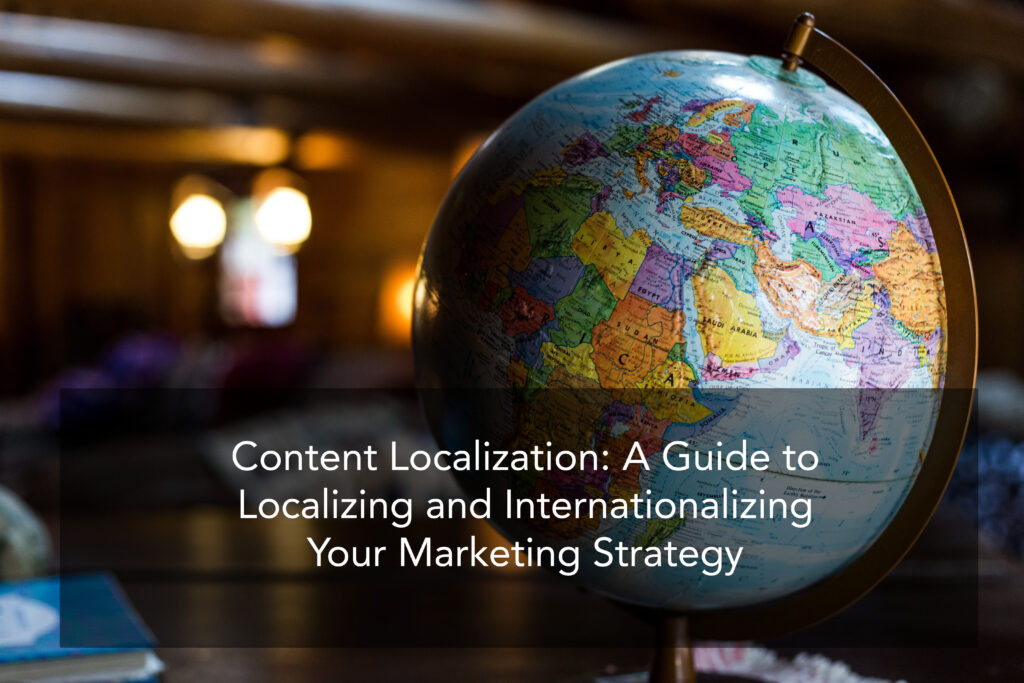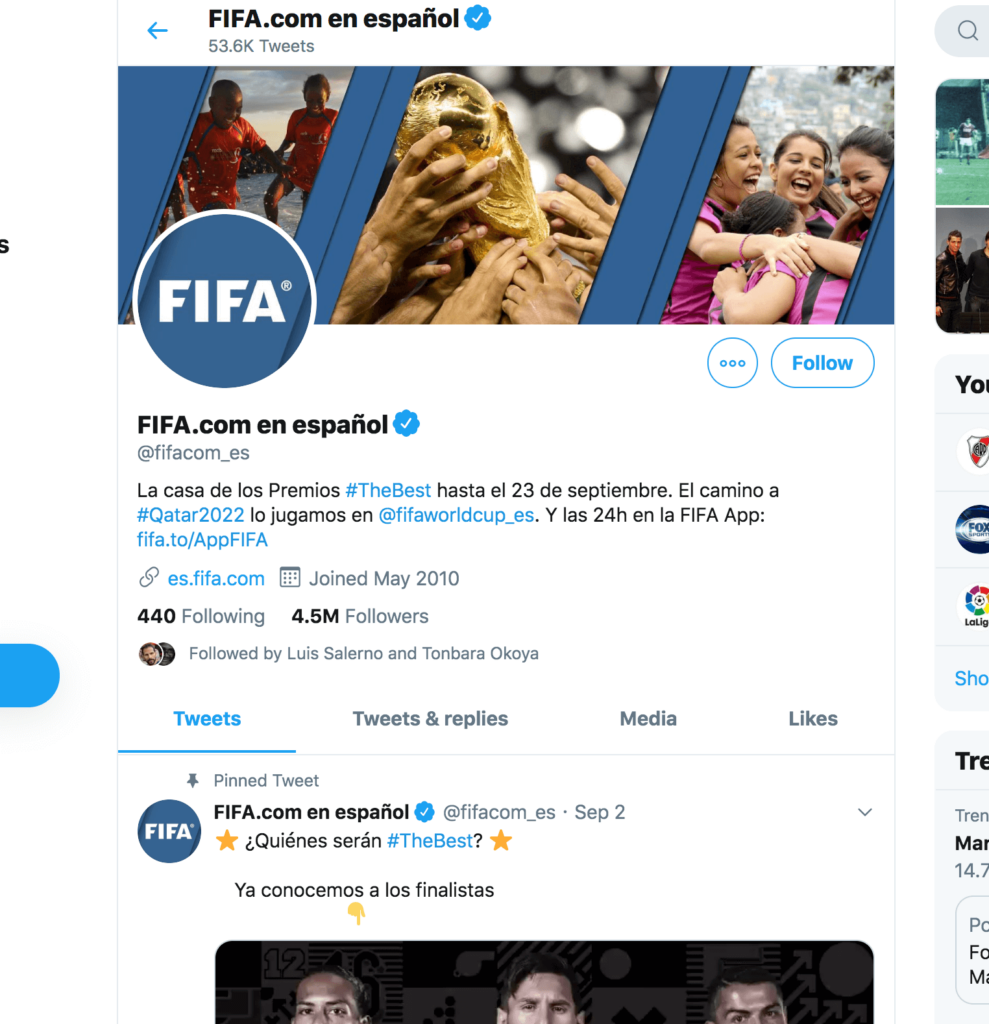
If you’re going international and you’re looking to level up your marketing strategy, then you’ll need to understand the fundamentals of content localization and how it can help and even reinforce your overall marketing strategy.
If you want to attract a diverse audience, then the truth of the matter is that a homogenized marketing strategy isn’t exactly the best way to do it.
Now, the term ‘diverse’ in this context is not just about language.
Although significant in itself, language barriers are only one of the many factors you need to keep in mind in content localization.
We’ll be talking about how you can create and market your content that is both relevant and appealing to an audience that is coming from a vastly different culture.
Effortlessly export your Google Docs to WordPress with just 1-click.
Get Started Today
Content localization is essentially the process of adapting content that is appropriate to your target audience. Through content localization, you can create a tailored and personalized experience for each of your target audiences. In turn, it diversifies your content, greater strong brand recognition, and of course, establish and maintain meaningful relationships with your global audience.
Many companies make mistakes by adopting inadequate translation processes, often relying on basic tools like Google Translate. While Google Translate can be helpful for simpler contexts, more complex projects require the hiring of professional translators or the use of more advanced tools, such as Translation Management Systems (TMS). These platforms provide a comprehensive solution, integrating various features for efficient localization management while ensuring quality and consistency in translations.

A well executed localization strategy will allow you to be one step, if not, many steps ahead of your competition. Localization is also a proactive measure as the process itself means you can take notice of and adapt to changing norms and relevant changes in the market.
As you read continue reading this article, it should be clear throughout that you must do extensive research before you even start.
It’s one of those areas where you just can’t cut corners as there are numerous risks involved when you don’t do a localization strategy properly.
You cannot get anywhere with a content localization strategy if you don’t get the right help.
Sure, you might be doing your best learning other languages with the help of tools like Ling App or Duo Lingo, but it’s not a scalable process when working with a large website.
If you don’t have internal resources for localization (few do, outside of major brands), then you should work with a professional translation company that also provides localization services.
Why? Because a translation company is your primary resource in successfully developing a content localization strategy and they must be present since Day 1 in your brainstorming process.
They coordinate with international professional translators and some happen to also specialize in their own industry. Meaning you can find a translator that specializes in content marketing and market research specific to your target audience.
Second, select translation companies also provide localization services. You should look for companies that specifically offer localization services as it streamlines your operations and makes things much easier overall.
Instead of coordinating with two different companies that have differing opinions, you’ll save more money and time by getting in touch with one that does it all. You’ll be killing two birds with one stone.
Their inputs will influence your entire content localization strategy from your translation, market research, content curation, and everything else under the umbrella of localization.
For a comprehensive list of US market research companies that can assist you in obtaining real-time insights from a significant number of consumers worldwide, look no further than our recommended providers. Overall, they’ll effectively tailor your marketing strategy’s content and your brand’s image that is both appropriate and attractive for your target audience.
While translation is more about communication, this aspect of localizing content deals more with resonance.
In the context of culture, we all differ in terms of interests and also in what we consider as taboo. You need to establish relevance to your target audience by paying attention to the things that matter to their culture and society; things that they respond both positively and negatively to.
Other linguistic nuances you have to keep in mind are local slang,metaphors, idioms, and other creative sayings. These types of speech are inherently unique to a particular culture and society, meaning they don’t exactly translate well to other languages.
Outside of your website, there are many content localization opportunities within your social media strategy as well. Here are some tips.
Social media is vital to contemporary marketing strategies as it is a channel that allows for personalized interaction with your audience.
As easy and convenient it is to use social media as a marketing tool, it’s best not to routinely use a one-size-fits-all content when reaching out to different audiences.

Instead of having one account, try to create multiple accounts with each providing content that is specifically translated to its target audience. Each account will have optimized content that is curated to a particular audience.
A good example is FIFA. Football is the most popular sport in the world and FIFA is its governing organization. The sport enjoys a following numbering in the billions and FIFA wants to keep its fans updated, particularly during World Cup Season. Thus, FIFA has multiple Twitter accounts, in different languages including Spanish, Portuguese, German, and Arabic. Of course.

You can do this by coordinating with members of your target audience. Approach your target audience’s average locals, models, influencers, celebrities—essentially anyone you can get your hands to become part of your content and other related media. Not only will it expand your networking opportunities but also improve your brand’s overall recognition.
They can also act as primary resources in helping you localize your content. Since they’re more than familiar with own interests and norms, they’ll be able to give you a more nuanced perspective in optimizing your content localization process.
Use a content tool like Buzzsumo or Onalytica to help you find these influencers.
We’re all familiar with the big name social media platforms i.e. Facebook, Twitter, Instagram, etc.
However, what if they are not allowed in your target market? You might even be baffled as to why this is even an issue since everyone you know uses it. Well, I don’t want to be a bearer of bad news, but it actually is. In China, Facebook and Google are banned as a result of its Great Firewall policy.
That means you can’t promote your Facebook pages and your other social media accounts in China because it just doesn’t exist. Instead of Google, China has Baidu as their most widely used search engine. Instead of Facebook, the most popular social networking app they have is WeChat. It’s a harsh way to put it, but all of your efforts won’t mean a thing if you can’t have simple access to the Chinese digital ecosystem.
Website localization is also one of the crucial elements to a successful content localization strategy. You might be wondering how to localize your website for different audiences when you only have one. To achieve this effectively, businesses often turn to software development for startups to implement scalable and adaptable solutions.
Besides, here are a few website development tricks that can help you localize your website.
If you’re have a WordPress website, then you can take advantage of the plethora of translation plugins that WordPress offers.
Other crafty things you can do on WordPress is creating multisites. Multisites is a WordPress feature that will allow you to create multiple websites that runs only on a single WordPress installation.
The color scheme does have an impact on your target audience’s perception of your brand. Each color has diverse connotations in other cultures.
One color might symbolize luck in one culture, but another culture might associate it with greed. Apply this tactic not only to your websites but also to your digital media and social media content.

You should also link to your social media accounts on your website and vice versa as well. This will lead to more traffic coming to your social media accounts and websites. It’ll also provide great convenience to your digital audience as they have immediate access to all relevant platforms in one place.
Here are other factors in content localization that involves optimizing your content’s relevant technical details.
As we all know, many language families don’t share the same writing system. There’s the Latin Alphabet, Arabic script, Asian characters, and many more. Thus, have your content translated accurately to the intended writing script. Be especially careful with Chinese characters.
One Chinese character can represent multiple meanings depending on the syntax and context.
Consult with your translation company for 100% accurate translations so there will be no disastrous mistranslations that’ll drastically affect your content’s message.
Another thing about writing scripts is that not everyone reads left to right. The Arabic, Hebrew, and Persian scripts are read from right to left. This presents another hurdle in your content curation process. In your website for instance, you’ll have to add some extra features that’ll allow it to be read from right to left.

We talked about this earlier, but it won’t hurt it mention it again in this section. Try to make sure that your color scheme does not conflict with the beliefs of your target audience. In fact, find one that is highly attractive and resonates well with them. This is the value of customer research.
Even though most of the world uses the metric system, some countries, namely three still use the imperial system (U.S.A, Myanmar, and Liberia). If you want to connect with the American audience since there are more than 320 million of them, use pounds instead of kilos and miles instead of kilometers.

Instead of using embedded text in your digital media, use pictograms. These are universal symbols and illustrations that represent ideas, actions, and objects.
Not only does this make your content accessible to anyone regardless of their language, it makes your content curation process a lot simpler. You don’t need to spend additional time and money translating each and every digital media.

If you’re looking to serve international audiences, content localization is a must.
In the end, content localization will bring you to an elevated understanding of how diverse the world is and how you can capitalize diversity to work for your marketing strategy.
Indeed, content localization is a lot of work. It’s all about compromise and being comfortable with changes.
However, try not to go overboard and that ensure that your content is promoting a consistent image of your brand.